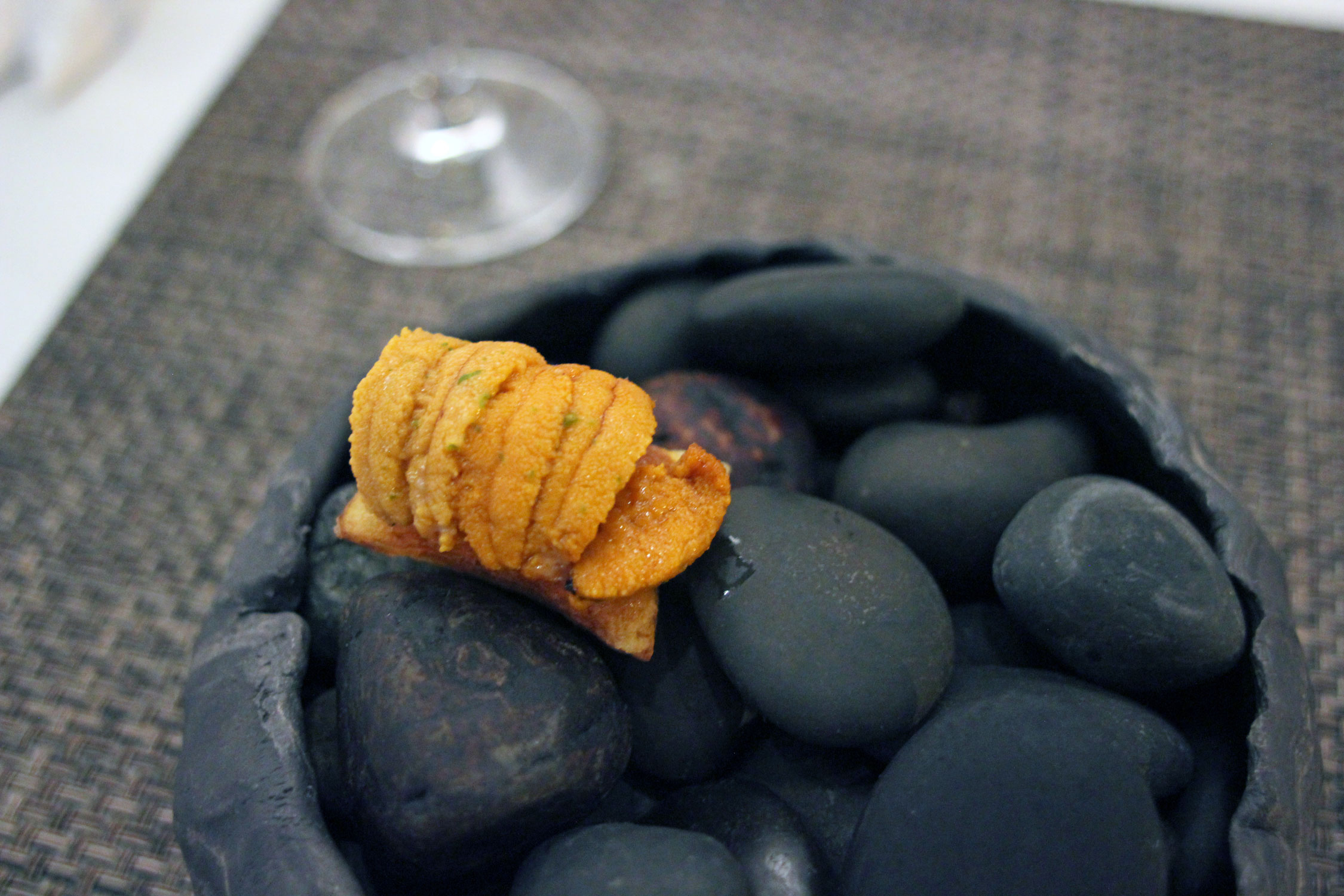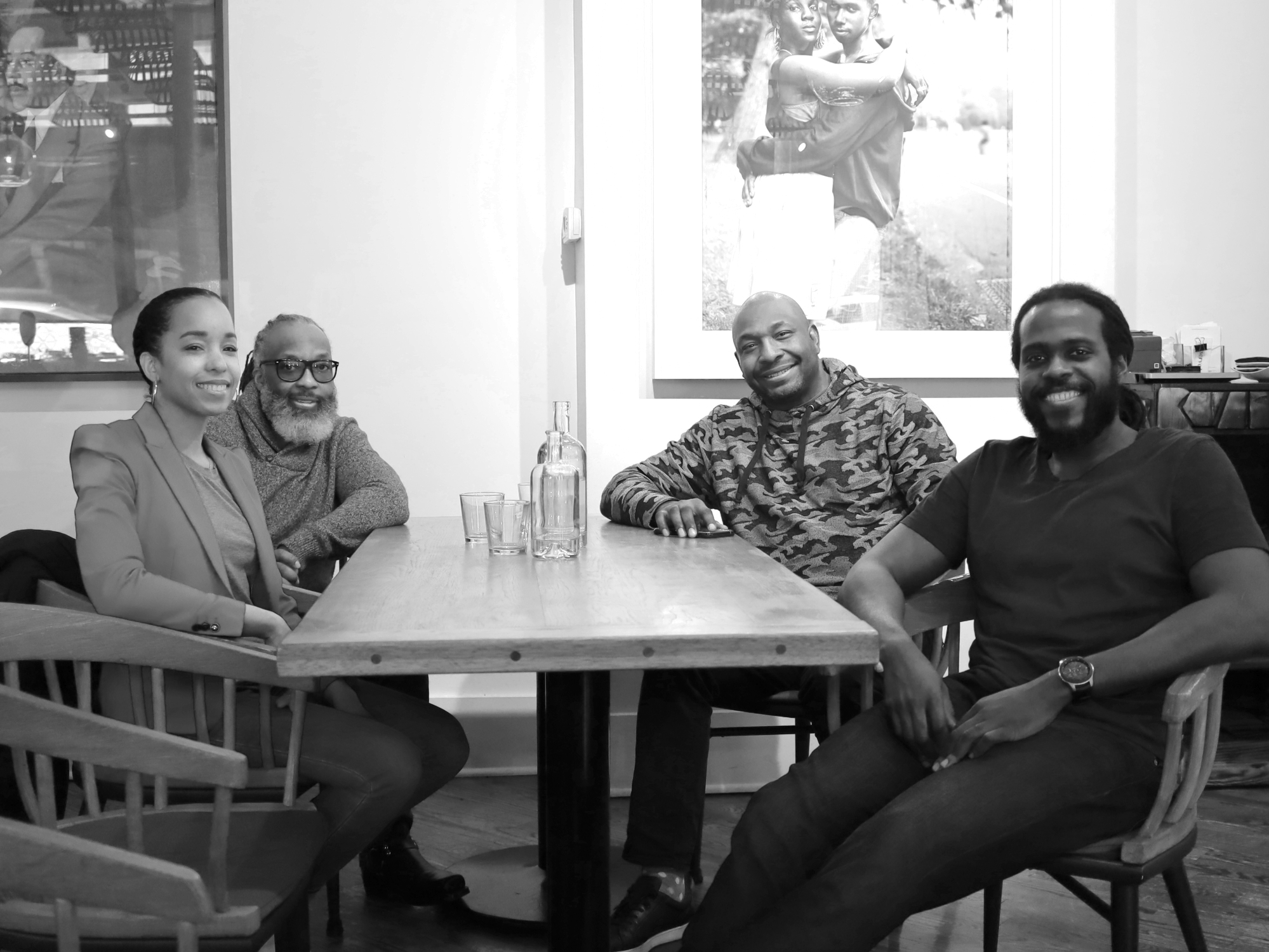THE SECOND STRANGEST THING TO DO right now is to dine inside a restaurant, seated at a table while servers bring you delicately plated food and announce wines with backstories of the grapes and the vineyards. Seen from the outside, as waiters in black suits and black masks courteously attend to my every need, I must look like a high dignitary being held prisoner by Zorro.
The strangest thing to do right now, of course, would be to write a conventional restaurant review of Curtis Duffy and Michael Muser’s Ever, as if nothing has happened to fine dining over the last few months. The appetizers were inventive! The wines were well-chosen! The chairs were comfortable! The sound level—well, if there’s anything I can speak to as something of an expert, it’s the management of sound at Ever.
This isn’t the first upscale restaurant I’ve dined at since all this started, but even the nicer ones I’ve been to—like Daisies, or Testaccio (the new restaurant from Aldo Zaninotto of Osteria Langhe)—have been informal summer meals improvised on patios. Ever was the first one that was indoors, and more than that, that was set up for the long haul, for the two-thirds of Chicago’s year when it is not pleasant to dine outside. That was set up for normalizing COVID-era dining, using the safety precautions that we have all learned and gotten used to over the past five months. More than that, it’s designed for bringing back fine dining, in all its overelaborate, overthought, frou-frou mad glory.
Well, that is certainly what Ever is. What does that feel like, now?

Michael Muser
I KNOW ONE OF MICHAEL MUSER’S BIG CONCERNS as Ever’s manager (executive producer? impresario?), has been the very first moment, when you’re greeted at the canyon opening (Ever’s entry walls are sculpted to look something like a rock canyon). Somehow they have to communicate that all appropriate precautions are being taken—without bumming you out with thoughts of Coronavirus as you prepare to eat a luxurious meal. This is the kind of thing that Muser thinks about a lot.
In the end, it’s handled with brisk efficiency. There’s a momentary pause to take temperatures on our wrists—as quick as checking a coat—and then not another word about it. The color-coordinated black masks and the professionalism of the temperature check are enough to make us confident that they are on top of it. I wish they could be put in charge at the airport.
Indeed, even though I’m greeted with masks, and have to make some effort to connect names to half hidden faces, they are comfortable enough with working this way that we are soon comfortable enough to forget about it—when I get up to find the bathrooms, I have to be gently reminded that I ought to put on my mask for the journey. (Fans of Chicago restaurant bathrooms, I have to say that these, though perfectly pleasant, are not as epic as the season-themed salles de bain of Duffy and Muser’s acclaimed predecessor restaurant, Grace.)
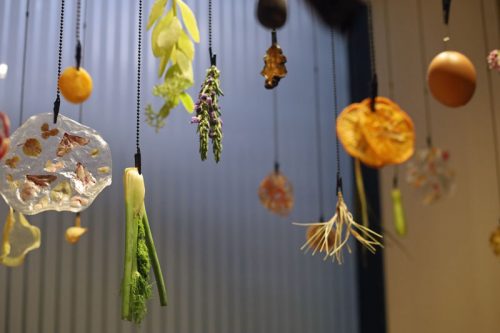
Food hangs at one point in the entryway, to preview what’s coming—but because of COVID, no touching or eating it.
I wondered about the spaced-out room—well, I guess it could be that kind of spaced-out too, but I mean the tables placed so they would naturally enforce social distancing. Would it feel luxurious, or just like too few tables on a very large patio? In fact the distancing seems fine, not noticeably further apart than simply a posh restaurant. What’s less comfortable is that when people have to reach around me to place or retrieve silverware, I am acutely aware that they are masked and I am not, and they are very much in my airspace. For safety, we should probably all put our masks back on when they come to do that, but this is the kind of meal where the silverware is changed with every course (ten, by the way), and that would get to be a grind that would kill the mood before long—at that point, we might as well be dining in glass bubbles.
So instead we have the strange situation of feeling like we’re in the pre-COVID world, maskless and eating and talking as ever, while the people attending to us are very much in the COVID world. Even so, they seem practiced enough to be natural, unperturbed by being masked while pouring us wine from a wildly complicated decanter, say.
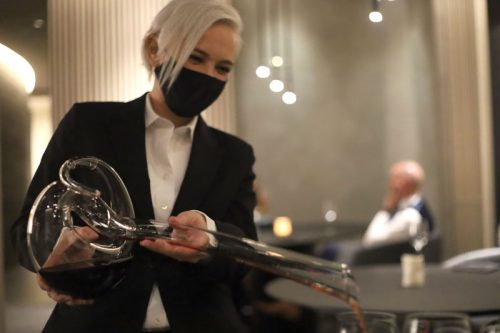
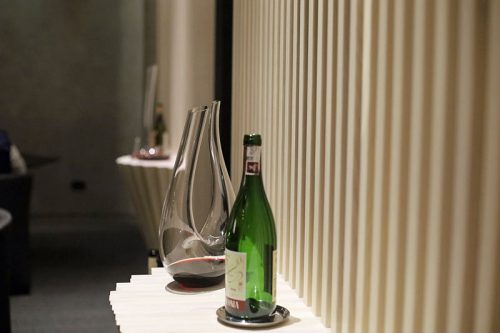
We admire the room itself—Muser comes out at one point and makes it a point of telling us that where in most restaurants you’re surrounded by paint on plaster, here you’re surrounded by concrete textured to look like velvet (the work of Vladimir, who also did the canyon walls), and by the wood that ascends to the ceiling, and undulates along the walls to create platforms for setting wine bottles on. The richness of the room is palpable. We like the serving pieces (some the same styles they’d had at Grace), we find the chairs (which envelope the diner, much as Grace’s did) comfortable.
But what we’re all wowed by are the tables, black slabs which we paw at like apes inspecting a monolith. They are, I think, wood with a silky matte finish, and they are amazingly resistant to fingerprints and grease blobs. Muser badly wanted to not have tablecloths like they’d had at Grace (perhaps in part because they’d made the choice to do all their laundry in house there), and he’d looked at many possible surfaces before they settled on these as feeling luxurious and stylish (but cloth-free). He says that server training was necessary to ensure that plates were placed down without scraping the surface—and lets us in on a secret of the fine dining life: however they’re goobed and schmeared after the night’s service, they get worked with Magic Eraser, same as Mom does to clean up peanut butter handprints on the wall, and are soon back to perfect. (Then they get a final application of sanitizer, before anyone touches them again.)
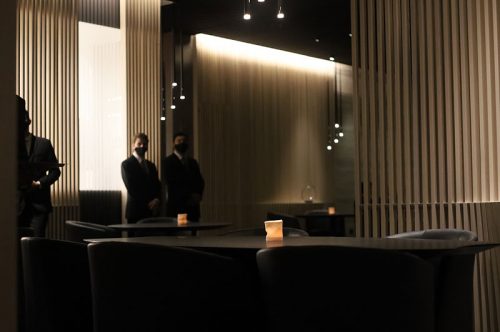
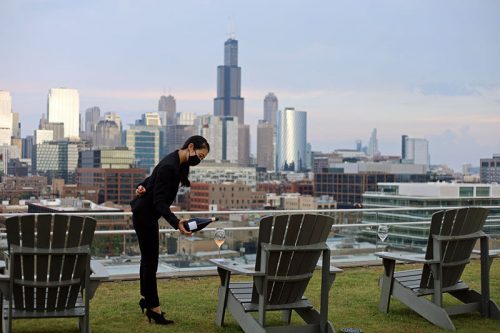
ACTUALLY, OUR FIRST INDOOR MEAL began outside—on the rooftop deck of the Sterling Bay-developed building in the West Loop, where Ever occupies about a third of the ground floor. Duffy and Muser’s Grace had a man cave in its basement, where if you were lucky, you might be invited, past the wine cellar and the employee changing rooms, to hang out with the big screen TV and the golf arcade game. It’s another era for them—Duffy has a new wife and Muser a much-photographed little girl, and Muser’s justification for the man cave, basically “You’re gonna live here anyway, so you might as well have fun,” no longer applies.
You have to accept that beauty is an end in itself. And that’s hard to do in a politically charged moment like this one.
Instead we rode the elevator to a million dollar view of downtown—at one point a rainbow over the skyscrapers, arranged specially for us, will make an appearance—for a pre-dinner glass of pink champagne. Somewhere in that gorgeous view, there was probably protesting, or at least the bridges standing up to prevent more looting of Gucci and the Apple Store, but we were high enough above it to be as oblivious as Marie Antoinette.

Did I feel any unease about this? I briefly thought perhaps I should, as I prepared to eat a meal that for two costs more than a week’s COVID unemployment benefit. The argument that tonight, I’d be fighting that unemployment by helping the restaurant industry get back on its feet, is both glib—oh, look at me heroically stuffing my face—and nevertheless true on some level. (We paid for our meal, though the champagne was a treat.) One of the things that gleaming, gorgeous late summer city was built on was fine dining, and tonight we were going to see if that city could return to that normal, safely and not stupidly. I didn’t want a medal for putting my cash (and in some sense my life) on the line for that proposition—but I would definitely accept a glass of pink champagne, thank you.

Curtis Duffy and team, on the line.
ALL OF THESE EVOLUTIONS ARE in the service of the one thing that hasn’t obviously changed, for COVID reasons anyway—the food of chef Curtis Duffy. The kitchen hasn’t changed—this is the third kitchen in a row, after Grace and before that, Alinea, that he’s helped design into a gleaming white laboratory where young men (if not all male, it’s close) work with the same quiet intensity as the boss.
And the food has changed glacially—given Duffy’s hypertight focus, little evolutions in his style make for seismic shifts. This is the fourth place I’ve dined where Duffy was in the kitchen—after Trio where he was Grant Achatz’s number two, and Avenues and Grace—and I notice things that would have seemed out of place before in his closely controlled world, and so jump out now.
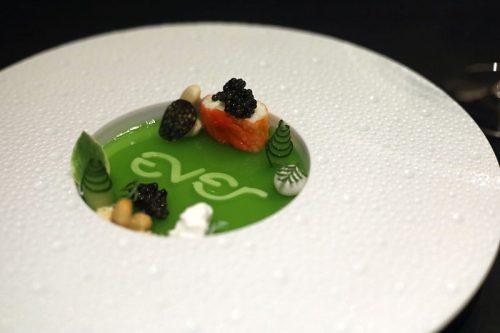
Bing! Delicate Thai flavors in a little salad—he’s always liked Asian food (when I filmed the kitchen on Grace’s opening night, family meal had a lot of cold noodles and the like) but this is a new facility with Thai flavors. Bang! A scallop course mixes mango, the Italian cured fat lardo, and the Mexican herb hoja santa—a trip around the world in a one-bite dumpling. Pow! A dessert takes a Thai banana, soft and fermented-tasting, and dresses it up for a fancy night out with chocolate, tonka bean and hibiscus.
Every time a really outstanding fine dining restaurant opens, it changes the nature of what fine dining is for, exactly. Trotter made it for improvisation with midwestern ingredients, Alinea made it for mindbending tricks, most recently Smyth has made it for weird science with curing and fermentation. I’ve heard people say that Duffy, though expert at making beautiful food at Grace, didn’t do anything as interesting and jarring with it as John Shields of Smyth, say. I can see that, but it’s also a jaded, almost Mannerist point of view toward food—one that says beauty is not enough, he’s not weird enough to jar our palates awake in 2020.
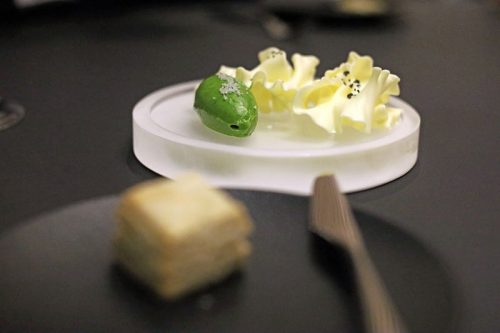
Well, I think beauty, rigorously pursued, is enough. A great chef is an artist in a particular medium, even if that medium has limitations—but all art forms have limitations (symphonies are lousy at telling stories, but then novels are hard to hum). You can have Gauguin and Picasso and still have Monet at the same time, finding the truth of beauty in a field of flowers.
To have it, though, you have to accept that beauty is an end in itself. And that’s hard to do in a politically charged moment like this one—at least, hard to do in public and run the risk of being identified with aesthetics over politics. I could hear hackles rising a few paragraphs back when I made dining out (expensive, indulgent, bourgeois) to be an admirable act—don’t you know that police are cracking heads, that there is racism and poverty? Way to be blind, snooty old privileged white man!
But history doesn’t run on one track. We make art at the same time as other things happen, because we are humans and we have to. At Ever, there’s a white room full of cooks dressed in white, making the most purely beautiful food in Chicago right now, like a cloister of sleeve-tattooed angels. It may not be transcendent and new from start to finish—the tasting menu is a genre with certain rules by now, and so when you get a supple little slice of rare lamb loin, it’s a good bet that melt-in-your-mouth wagyu will follow it. Every art form has a little tyranny of audience expectations.
But Ever has its moments, in the fleeting art form of eating, when two things, prepared with almost inhuman care and precision, are combined on the plate. And you taste the divine for an instant—how astonishingly good creation is at making flavors and textures we want to eat.
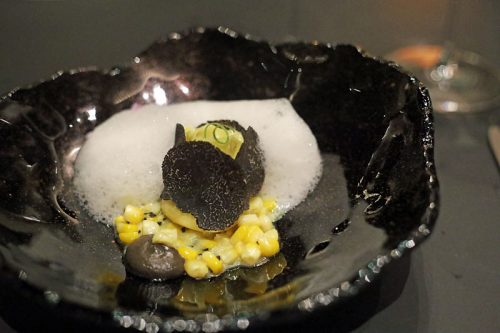
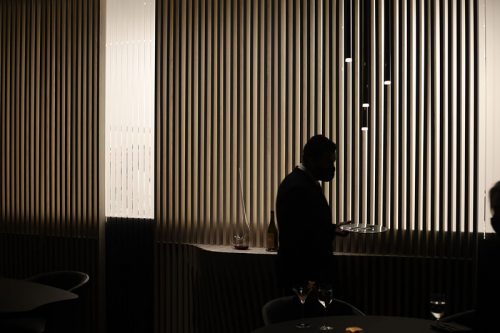
TOO MUCH? AM I GETTING pretentious about what is, after all, only dinner? As David Mamet has Ricky Roma say in Glengarry Glen Ross, “A great meal fades in reflection. Everything else gains. ‘Cause it’s only food.”
Maybe so. But if I’m hungry for transcendent sensations, I come by that hunger honestly. It’s been five months of cooking at home, of even great restaurants in Chicago turning out comfort food, fried chicken and beef Wellington under a tire company’s plaque earned with foie gras and truffles. I am ready for food art seeking the highest heights. I want to hear the life story of the grape juice in my glass again. I couldn’t go to the Art Institute until a week or two ago, I can’t go to the CSO—but I can go to Ever for dinner.
At one point Michael Muser comes by our table. I’ve been on the periphery of his and Duffy’s saga up to this point for years—writing about Grace, about where their team went, about the steps in the construction of the restaurant. I know at times he’s felt like his fate was forever to be building a restaurant, not to be operating one. Now it’s week 3 of having one, and he expresses a little amazement that this is it—”I went through all this to be a restaurant manager. That’s not that high a thing,” he says self-mockingly.
It isn’t, and yet it is. The art is in the medium, but it’s also in the artist and his dedication. So many things in this night seem ennobling of the human spirit, after five grotty months of being all cooped up at home in our own messes. The service, warm and kindly, reminding us of the pleasures of seeing other human faces, even half covered. The physical perfection of a table, or of a slice of wagyu on a plate, or a 2014 Heymann-Löwenstein “Uhlen B” Mosel. The view of a city I love, even when it’s not being very lovable at the moment. A night at Ever has made me feel human again. Thank you.
Oh yes, of course, my mask. I’ll put it back on now.
Michael Gebert is ever-hungry editor of Fooditor.
Latest
Join the Discussion
After you comment, click Post. If you're not already logged in you will be asked to log in or register with Disqus.



